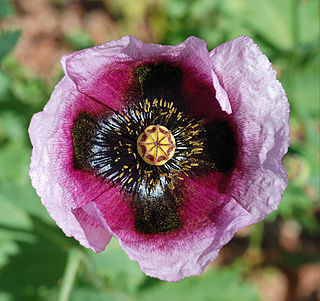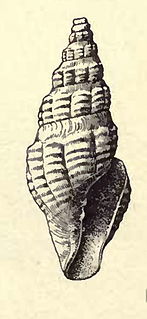Related Research Articles

Papaver is a genus of 70–100 species of frost-tolerant annuals, biennials, and perennials native to temperate and cold regions of Eurasia, Africa and North America. It is the type genus of the poppy family, Papaveraceae.

Aiphanes is a genus of spiny palms which is native to tropical regions of South and Central America and the Caribbean. There are about 26 species in the genus, ranging in size from understorey shrubs with subterranean stems to subcanopy trees as tall as 20 metres (66 ft). Most have pinnately compound leaves ; one species has entire leaves. Stems, leaves and sometimes even the fruit are covered with spines. Plants flower repeatedly over the course of their lifespan and have separate male and female flowers, although these are borne together on the same inflorescence. Although records of pollinators are limited, most species appear to be pollinated by insects. The fruit are eaten by several birds and mammals, including at least two species of amazon parrots.

Aiphanes horrida is a palm native to northern South America and Trinidad and Tobago. Aiphanes horrida is a solitary, spiny tree. In the wild it grows 3–10 metres tall tall with a stem diameter of 6–10 centimetres ; cultivated trees may be as much as 15 m (49') tall with a 15 cm (6") diameter. The epicarp and mesocarp of the fruit are rich in carotene and are eaten in Colombia, while the seeds are used to make candles. In parts of the Colombian Llanos endocarps are used to play games.

Banksia horrida, commonly known as prickly dryandra, is a species of shrub that is endemic to Western Australia. It has hairy stems, linear, pinnatifid leaves with sharply pointed teeth on the edges, up to sixty cream-coloured flowers in each head and hairy, egg-shaped follicles.
Muehlenbeckia horrida subsp. abdita. commonly known as remote thorny lignum, is a critically endangered shrub endemic to Western Australia.

Vachellia horrida is a low spreading shrub or sometimes tree native to both the wet and dry scrublands of tropical to subtropical East Africa. Common names for it are Cape gum and dev-babul. It is also found elsewhere in Africa, Asia, India and South America. It frequently has stipular spines 9.5 cm long. V. horrida is an important browse plant in the tropics, particularly during the dry season.

George Bentham's taxonomic arrangement of Dryandra was published in 1870, in Volume 5 of Bentham's Flora Australiensis. It replaced the 1856 arrangement of Carl Meissner, and stood for over a century before being replaced by the 1996 arrangement of Alex George.

Scleropyrum is a genus of trees in family Santalaceae first described as a genus in 1838. At present, only one species is recognized, although several others are listed as "unresolved," meaning that further research is needed to determine affinities.
Tilletia horrida, rice kernel smut, caryopsis smut, black smut, or grain smut, is a fungal rice disease believed to only affect the Oryza genus. It presents as a partial bunt.

Euphorbia horrida, the African milk barrel, is a species of flowering plant in the family Euphorbiaceae, native to South Africa. It is a cactus-like shrub showing remarkable similarities to the true cacti of the New World, and thus an example of convergent evolution. Growing to 1.5 m, it has blue-green, heavily ridged spiny stems carrying solitary green flowers in summer. In temperate regions it must be grown in heated conditions under glass.

Daviesia horrida, the prickly bitter-pea, is a species of flowering plant in the family Fabaceae, endemic to the south-west of Western Australia. It is a prickly shrub, growing to between 0.3 and 2 metres in height. The red and yellow pea flowers are produced between July and November in its native range.
Herrickia horrida is a species of flowering plant in the aster family known by the common name horrid herrickia. It is native to Colorado and New Mexico in the United States, where it occurs only in the Animas River basin. It is often included in genus Eurybia.
Eupithecia horrida is a moth in the family Geometridae. It is found in China (Yunnan).

Centaurea horrida is a species of the genus Centaurea which is only found growing in Sardinia and associated islands. Due to their limited ability to disperse, they are isolated from other environments, and have a very low colonizing ability.

Pterolophia is a genus of longhorn beetles of the subfamily Lamiinae, containing the following species:

Acropora horrida is a species of acroporid coral that was first described by James Dwight Dana in 1846. Found in tropical, shallow reefs in marine environments, it occurs near fringing reefs around turbid water, at depths of 5 to 20 m. It is listed as a vulnerable species on the IUCN Red List, and it is thought to have a decreasing population. It is not common and found over a large area, and is listed under CITES Appendix II.

Cordieria is a genus of sea snails, marine gastropod mollusks in the family Borsoniidae.

Hakea horrida is a shrub in the family Proteacea and is endemic to an area in the Wheatbelt, Great Southern and Goldfields-Esperance regions of Western Australia. It is a small dense shrub, extremely prickly with large creamy white scented flowers.
Pterolophia instabilis is a species of beetle in the family Cerambycidae. It was described by Per Olof Christopher Aurivillius in 1922. It is known from Seychelles.

Zale horrida, the horrid zale, is a species of moth in the family Erebidae. The species was first described by Jacob Hübner in 1819. It is found in North America.
References
- ↑ BioLib.cz - Pterolophia horrida. Retrieved on 8 September 2014.